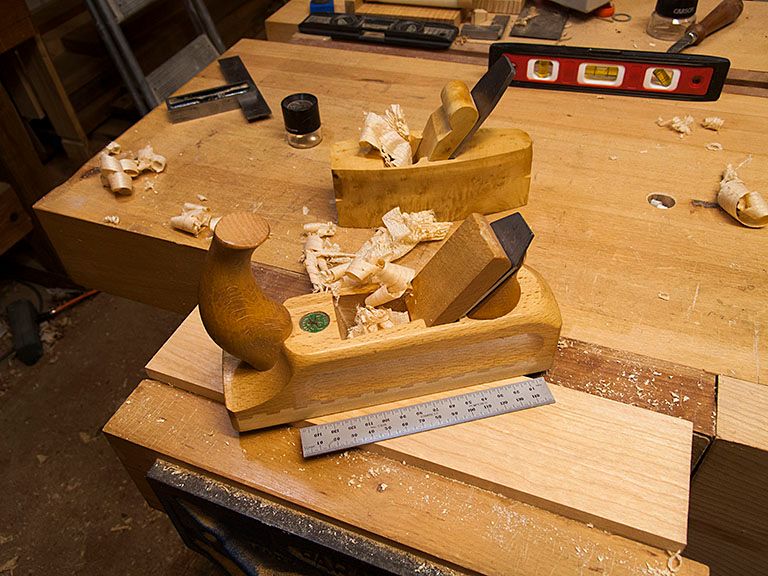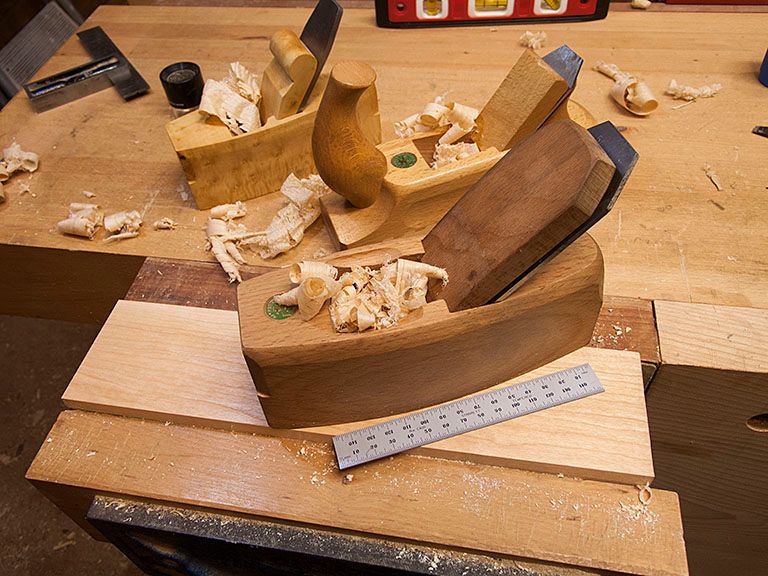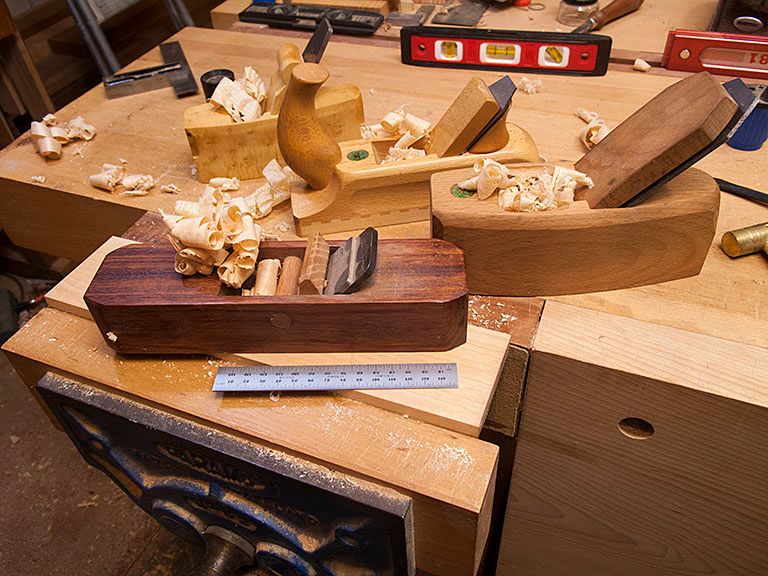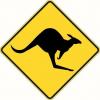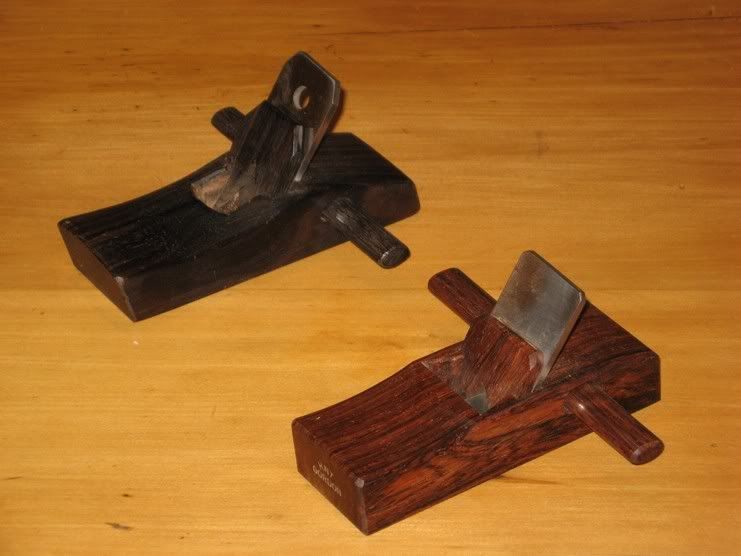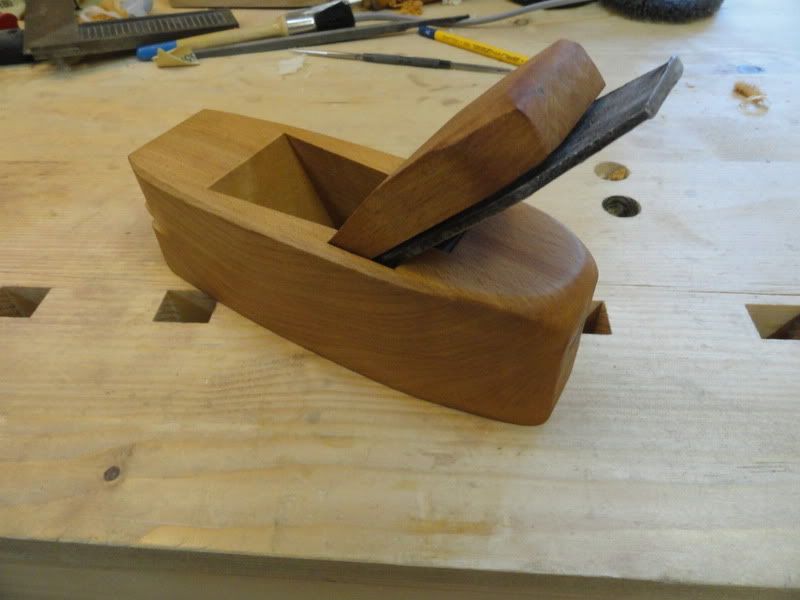Another thread questioned getting either a #2 or #3 for a smoothing plane, while Kees and I mentioned using wood stock planes I did not want to hijack the thread. What to do Bubba, what to do. Oh I know, start another thread but this time about wood stock smoothers.
I have three wood stock smoothers that I use and a number of shop made smoothers as well. I'll just post a photo of one of the shop made planes as they all look the same, the only difference between them is in length.
The first is a PhillyPlane coffin smoother:
It is single iron, bedded at 50 degrees with a high carbon straight iron. The cutter is easy to set with just light taps, it holds the set and releases easily. Even with a single iron, it leaves a beautiful surface on a difficult wood such as Ribbon Sapele.




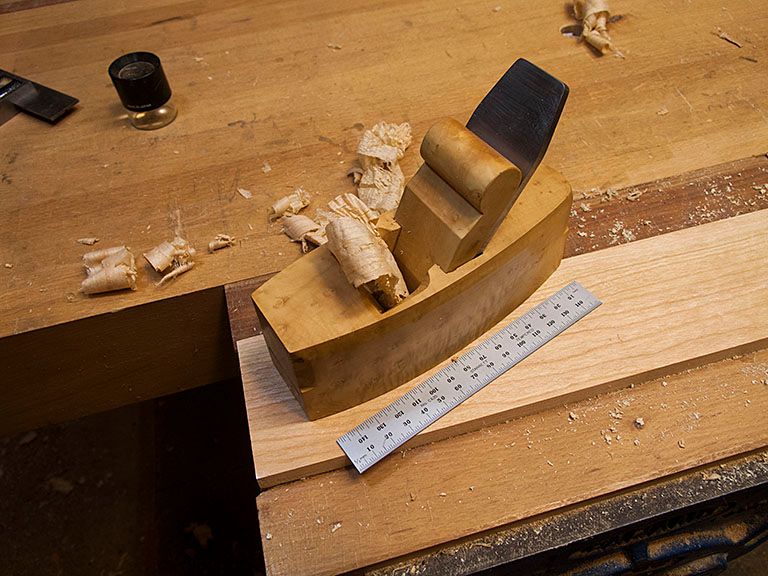

 Reply With Quote
Reply With Quote